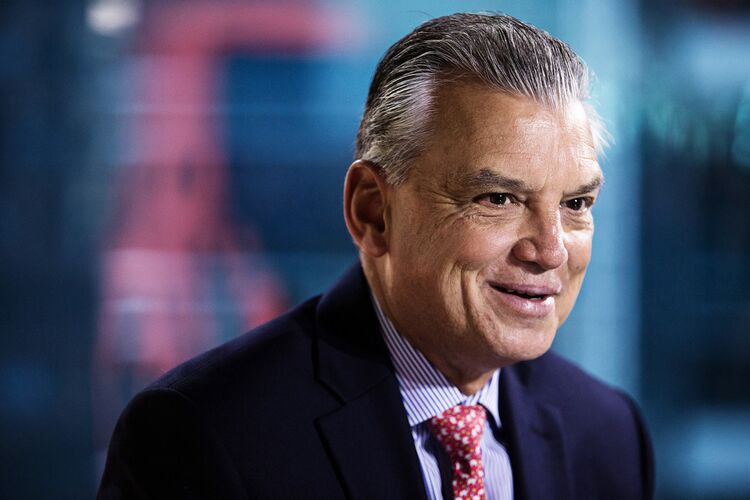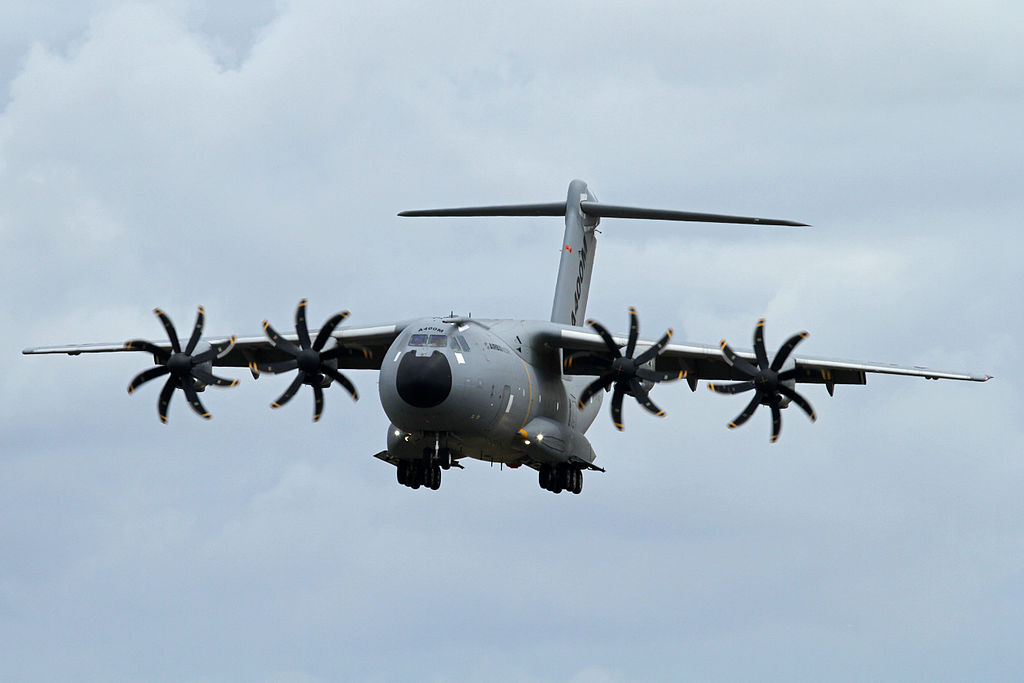Leeham News and Analysis
There's more to real news than a news release.
 Leeham News and Analysis
Leeham News and Analysis
- The Boeing 767 Cross Section, Part 1 November 24, 2022
- Movie Review: Devotion November 21, 2022
- China will accelerate development of its commercial aerospace sector November 21, 2022
- Bjorn’s Corner: Sustainable Air Transport. Part 46. eVTOL comparison with helicopter November 18, 2022
- The economics of a 787-9 and A330-900 at eight or nine abreast November 16, 2022
PNAA Conference Day 1: Aerospace Clusters
- Feb. 9, 2016: Today is the first of three days of conference meetings organized by
 the Pacific Northwest Aerospace Alliance (PNAA), in Lynnwood (WA). We’re providing live reporting throughout the three days.
the Pacific Northwest Aerospace Alliance (PNAA), in Lynnwood (WA). We’re providing live reporting throughout the three days.
Aerospace clusters are evolving throughout the world, said Kevin Michael, vice president of ICF International.
California is on the decline. Two new clusters on the rise are Mexico and the Southeastern US. The Netherlands and Singapore are successful, long-term clusters.
California was the premier aerospace cluster for decades, but its demise began when Lockheed chose Georgia as the location to build the C-130. The founding of Airbus was not good news for SoCal, and neither was the end of the Cold War. The acquisition of McDonnell Douglas by Boeing in 1997 further precipitated the decline of SoCal.
Posted on February 9, 2016 by Scott Hamilton
C-17: the end of an era
Dec. 1,2015: The last C-17 flew off the Boeing production line in Long Beach (CA) last week, ending aircraft
The final C-17 before taking off from the Long Beach (CA) production plant Boeing acquired in the McDonnell Douglas merger of 1997. MDC designed the C-17. Los Angeles Times photo.
production at the former McDonnell Douglas plant that began delivering Douglas DC-8s at the start of the jet age.
It’s the end of an era that lasted six decades.
Prior to producing the DC-8 at Long Beach, Douglas Aircraft Co. built its long line of piston airliners at the Santa Monica (CA) Airport.
The DC-8 was followed by the DC-9, DC-10, the DC-9 Super 80 series, the MD-11, the MD-90 and the final commercial airliner at Long Beach, the MD-95/Boeing 717. The C-17 was the only military aircraft built here.
Here’s a photo array dedicated to this storied history.
Posted on December 1, 2015 by Scott Hamilton
Northrop wins, Boeing/Lockheed lose bomber contract
 Oct. 27, 2015: Northrop Grumman, builder of the B-2 bomber in the USAF inventory, was awarded the contract to build the next generation long-range bomber, which is yet to be named. For the moment, we’ll call it the “B-3.” For now it’s official name is the Long Range Strike Bomber (LRSB).
Oct. 27, 2015: Northrop Grumman, builder of the B-2 bomber in the USAF inventory, was awarded the contract to build the next generation long-range bomber, which is yet to be named. For the moment, we’ll call it the “B-3.” For now it’s official name is the Long Range Strike Bomber (LRSB).
The Seattle Times has this story.
This is a big blow to Boeing, whose declining defense business was already in trouble from defense cutbacks and previous contract losses. The contract is worth $80bn.
Boeing’s strategy in acquiring McDonnell Douglas Corp back in 1997 was to even the revenue stream between commercial and military, in which Boeing then had a small portion and MDC was predominately military. Boeing was a sub-contractor to Northrop on the B-2, gaining a lot of its composite experience there which ultimately benefited development of the 787.
Unless Boeing finds grounds to challenge the contract award, prevails and wins a second competition, its Defense unit will continue to shrink.
Goldman Sachs, as with many other investment banks, called this a big win for Northrop.
Posted on October 28, 2015 by Scott Hamilton
Embraer faces new challenge from MRJ90
Part 2

Paulo Cesar, president and CEO of Embraer’s commercial aviation unit. Photo via Google images.
Sept. 10, 2015, © Leeham Co. Embraer is the dominant producer of commercial aircraft in the 70-125 seat sector, having overtaken Bombardier in the last decade following the development and 2004 introduction of the E-Jet. Bombardier’s CRJ family struggles, hampered by a sales force that neglected it and the Q400 turbo-prop as attention focused on the new CSeries.
Embraer in recent years faced new competition. However, the early entries—AVIC’s ARJ21 and the Sukhoi Superjet SJ100, both in the 70-90 seat sector, proved little to worry about. The ARJ21, now eight years late, proved to be a technological and industrial dud, a project that was more about learning how to design and build an airplane than producing a commercially viable one.
The SSJ100, while winning favorable reviews, was and continues to be plagued by a poor production system and in recent years the political overhang of Russia’s annexation of Crimea and its war in Ukraine.
Shortly, though, the E-190 faces a new challenger: the Mitsubishi MRJ90. It’s two years late, now forecasting an entry-into-service of 2017—just one year ahead of the redesigned E-190, the E-190 E2. The MRJ90, a 90-seat clean-sheet design, is Japan’s first commercial airliner since the NAMC YS-11 turbo-prop of the 1960s. The MRJ90’s first flight is scheduled for the second half of next month. Full flight testing moves to Washington State in the first quarter next year.
Posted on September 10, 2015 by Scott Hamilton
Airbus, Airlines, Boeing, Bombardier, CSeries, Embraer, Lockheed Martin, McDonnell Douglas, Mitsubishi
767, A320, A400M, Airbus, Boeing 737, Bombardier, C-130, CRJ, E-175, E-175-E2, E-190, E-190 E2, E-195, E-Jet, Embraer, International Aero Engines, KC-390, Lockheed Martin, McDonnell Douglas, MD-90, Mitsubishi, MRJ90, Paulo Cesar, Q400, SkyWest Airlines, Trans States Airlines, V2500
Odds and Ends: KC-390 first flight; A400M; AirAsia 8501; Bombardier credibility
KC-390 first flight: Embraer’s largest airplane ever built, the KC-390 tanker/transport, made its first flight today.
We profiled the airplane last October following our visit to Brazil.
The airplane fulfills needs for Brazil’s vast geography to supply its population and to serve as a military platform. It also gives EMB valuable experience in developing large aircraft. The cross-section is about the size of a Boeing 767. It’s slightly larger than a Lockheed Martin C-130 but smaller than the Airbus A400M.
Speaking of A400M: Tom Enders, CEO of Airbus Group, had some comments about this problem child at Airbus in his annual press conference dinner in Paris. Aviation Week reports.
AirAsia 8501: Reuters reported last week two unidentified sources said the captain was out of his seat cutting power to two computers, working a flaw, when AirAsia flight 8501 went out of control and crashed into the Java Sea. Now there’s a report disputing this.
Bombardier credibility: Ahead of the Feb. 12 year end 2014 earnings call, Bloomberg News has a story that focuses on Bombardier’s credibility issues with investors. CEO Pierre Beaudoin has his work cut out for him on the call to reassure investors.
Posted on February 3, 2015 by Scott Hamilton
Airbus A400M; how good and how late?
Subscription required
By Bjorn Fehrm
Introduction
01 Feb 2015: Six years ago Tom Enders, then-CEO for Airbus (when the parent was named EADS), threatened to stop the A400M project. He then played hardball to get eight European states to understand they had to pay 5bn Euro more or get no plane. Airbus existence could be threatened by a project that its management when the program was launch (CEO Jean Pierson) did not want but that the politicians convinced Pierson’s successor, Noel Forgeard, to do.
Now Tom Enders is CEO of Airbus Group and has to apologize to the same governments that he struck a deal with then to finish the project if Airbus got the money and a consent to three years of delays. Now Airbus can no longer fulfill the terms and the airplane is still falling short of performance specifications. Deliveries have been delayed further and promised capabilities will be delivered later than said. Like then, heads are rolling at Airbus and tighter control is being applied.
Summary
- The A400M rests between the Lockheed Martin C-130 and the Boeing C-17.
- European countries need an airlifter for military and humanitarian missions.
- Dirt airstrip capability is needed.
- The program will take longer to complete and this time Airbus has to pay.
Posted on February 1, 2015 by Bjorn Fehrm
Airbus, Boeing, EADS, Lockheed Martin, MTU, Premium, Rolls-Royce
A400M, Airbus, Boeing, C-130, C-17, EADS, Lockheed Martin, Rolls-Royce
Email Subscription
Twitter Updates
My TweetsAssociations
Aviation News-Commercial
Commentaries
Companies-Defense
Resources
YouTube
Archives
- November 2022
- October 2022
- September 2022
- August 2022
- July 2022
- June 2022
- May 2022
- April 2022
- March 2022
- February 2022
- January 2022
- December 2021
- November 2021
- October 2021
- September 2021
- August 2021
- July 2021
- June 2021
- May 2021
- April 2021
- March 2021
- February 2021
- January 2021
- December 2020
- November 2020
- October 2020
- September 2020
- August 2020
- July 2020
- June 2020
- May 2020
- April 2020
- March 2020
- February 2020
- January 2020
- December 2019
- November 2019
- October 2019
- September 2019
- August 2019
- July 2019
- June 2019
- May 2019
- April 2019
- March 2019
- February 2019
- January 2019
- December 2018
- November 2018
- October 2018
- September 2018
- August 2018
- July 2018
- June 2018
- May 2018
- April 2018
- March 2018
- February 2018
- January 2018
- December 2017
- November 2017
- October 2017
- September 2017
- August 2017
- July 2017
- June 2017
- May 2017
- April 2017
- March 2017
- February 2017
- January 2017
- December 2016
- November 2016
- October 2016
- September 2016
- August 2016
- July 2016
- June 2016
- May 2016
- April 2016
- March 2016
- February 2016
- January 2016
- December 2015
- November 2015
- October 2015
- September 2015
- August 2015
- July 2015
- June 2015
- May 2015
- April 2015
- March 2015
- February 2015
- January 2015
- December 2014
- November 2014
- October 2014
- September 2014
- August 2014
- July 2014
- June 2014
- May 2014
- April 2014
- March 2014
- February 2014
- January 2014
- December 2013
- November 2013
- October 2013
- September 2013
- August 2013
- July 2013
- June 2013
- May 2013
- April 2013
- March 2013
- February 2013
- January 2013
- December 2012
- November 2012
- October 2012
- September 2012
- August 2012
- July 2012
- June 2012
- May 2012
- April 2012
- March 2012
- February 2012
- January 2012
- December 2011
- November 2011
- October 2011
- September 2011
- August 2011
- July 2011
- June 2011
- May 2011
- April 2011
- March 2011
- February 2011
- January 2011
- December 2010
- November 2010
- October 2010
- September 2010
- August 2010
- July 2010
- June 2010
- May 2010
- April 2010
- March 2010
- February 2010
- January 2010
- December 2009
- November 2009
- October 2009
- September 2009
- August 2009
- July 2009
- June 2009
- May 2009
- April 2009
- March 2009
- February 2009
- January 2009
- December 2008
- November 2008
- October 2008
- September 2008
- August 2008
- July 2008
- June 2008
- May 2008
- April 2008
- March 2008
- February 2008


